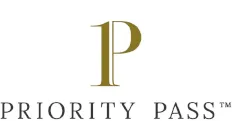Lounge access with Priority Pass
Slovakia hasn’t adopted debit and credit card spending as quickly as its European neighbours. Some 40% of payments in 2017 were non-cash transactions, while 60% were made in cash.
The proportion of plastic payments is growing, especially in its capital Bratislava, although Slovakian officials admit that cashless technology needs to be implemented better in smaller cities. If you’re visiting places such as the beautiful World Heritage Site in Vlkolinec, or skiing in glorious Jasna, you might have a harder time making card payments.
Visa and Mastercard are the networks most likely to be accepted in Slovakia. It might be more difficult to use smaller networks like American Express, Discover or Diners Club.
Whatever credit card you have, it’s sensible to carry euros as well in case you stumble upon retailers or restaurants that don’t accept card payments.
You’re best off exchanging pounds for euros before you head to Slovakia though. The country is packed with ATMs – or “bankomats” in Slovak – but most of them will charge a fee for withdrawing cash. That’s on top of the fees you’ll pay to your home bank.
What other fees can I expect to pay?
- Foreign transaction fees (charged by your own bank).
A non-sterling fee of around 3% per transaction can apply, depending on your credit card. That’s £15 in fees for every £500 spent with your card. - Merchant currency conversion fees (charged by the merchant’s bank).
Sometimes, a merchant will offer to take payment in pounds instead of in euro. This is known as a dynamic currency conversion (DCC) and it can mean higher fees than if you simply paid in the local currency. Sometimes a cash machine will offer this service, in which case the same advice applies. - Card payment surcharges (charged by the merchant).
If you’re using a Visa or Mastercard from an EU bank, you won’t need to worry about card payment surcharges. - Cash advance fees (charged by your own bank).
Your card issuer may charge a fee for cash advances (withdrawing cash using your card). - Cash machine fees (charged by the cash machine provider).
The provider of a cash machine may charge a fee if you withdraw cash using your card, although this is thankfully becoming rarer.
It’s also worth noting that when it comes to cash advances and non-sterling transactions, many card issuers will start charging interest on the day your account is debited, rather than the customary “up to 55 days interest-free” that usually applies provided you clear your balance in full each month.
EU ban on credit card surcharges
In January 2018 the EU required member states to adopt the Payment Service Directive 2 (PSD2), a ban on card payment surcharges (that’s when a retailer adds a fee because you’re paying with a credit card). However, it’s important to note that there are limitations and exceptions to this directive, and there are other fees that may apply when you pay by credit card. If your card is from a non-EU bank, uses a network other than Visa or Mastercard or is a business/corporate card, then the merchant may still levy a surcharge.
So how can I avoid the fees?
As mentioned, it can be difficult to avoid ATM fees when withdrawing cash in Slovakia. Your best bet is to use an ATM linked to your home bank.
To avoid fees when making credit card payments, consider taking out a card offering fee-free currency conversion (see the table below), even if you only use it when you’re out of the country. Once you have one of these cards, if a merchant offers to take payment in pounds, say you’re happy to pay in euros, since you know that your own bank won’t add a margin.
Some travel credit cards won’t penalise you for withdrawing cash either, although you’ll still be liable for any ATM fees charged.
Are American Express cards accepted in Slovakia?
American Express is accepted in Slovakia, although not everywhere. Visa and Mastercard are more likely to be accepted. If you have an Amex card, it’s worth carrying an alternative form of payment as well. Additionally, merchants may levy a surcharge for Amex payments.
Contactless and chip-and-PIN payments
Contactless payment technology is growing across Slovakia. If a merchant accepts card payments, you can expect to pay this way for transactions under 20 euros.
Chip-and-PIN technology is also a staple of Slovakian payments. Provided you have a four-digit PIN, you should be able to pay this way with no problems.
Is it safe to use my credit card in Slovakia?
ATM and card payment scams aren’t particularly common in Slovakia, but it’s better to be safe than sorry. Here are some precautions you can take for increased security:
- Use an ATM within a bank. If for some reason the ATM eats your card, you’ll be able to quickly retrieve it. Also, ATMs within banks are less likely to be tampered with. Should you use one outside a bank, check for devices attached to the reader and cash return slot.
- Consider taking an additional credit card. You can use your primary card for payments and keep your back-up card in your hotel room safety deposit box. That way, you’ll never be left without money.
- Keep your card in sight. Card cloning is rare in Slovakia, but just in case, don’t let your card out of your sight.
How to prepare before travelling to Slovakia
- Get a credit card without foreign transaction fees. If you travel often, avoiding the 3% foreign transaction fee can save you a lot of money. Consider getting a travel credit card to avoid foreign transaction fees.
- Opt for a Mastercard or Visa. They’re the most-widely accepted cards and Slovakia is no exception, though you can still use your American Express card in some locations. There are plenty of ATMs around if you want to withdraw cash, but it’s unlikely to be free.
- Carry a back-up card. Try to always carry a second card when travelling abroad, given you don’t know what could happen to your primary card.
- Get some cash. If you want to make a cash withdrawal, keep in mind that credit cards have additional fees while most debit cards don’t.
- Inform your bank that you’re travelling to Slovakia. If you don’t let your bank know ahead of time the dates you’ll be away and where you’ll be, it may block your card if it suspects the charges are fraudulent.
- Make a note of your bank’s phone number. If you lose your card or have payment issues, you’ll be able to call the bank to resolve it.
Does public transport in Slovakia accept credit cards?
You can buy bus and train tickets using a credit card. Taxi drivers will want to be paid in cash, unless you book a cab using a mobile app such as Hopin or Taxify.
Bottom line
If you travel to Slovakia, you can safely use your credit card to make payments and withdraw cash. You’ll just have to be careful to not incur fees that you could otherwise avoid. With a decent travel credit card, you’ll avoid paying foreign transaction fees. By simply declining the DCC when offered, you’ll also avoid a poor exchange rate or commission.
Compare cards with fee-free currency conversion in Slovakia
Finder Score for credit cards
To make comparing even easier we came up with the Finder Score. Costs, perks and suitability across 120+ cards are all weighted and scaled to produce a score out of 10. The higher the score the better the card – simple.
Read the full methodologyFrequently asked questions
How to use a credit card in…
More guides on Finder
-
Using a credit card in Taiwan
Consider a card with fee-free spending abroad and decline decline dynamic currency conversion to avoid card charges in Taiwan.
-
A guide to Gatwick’s lounges and how to access them
A comprehensive guide to London Gatwick’s airport lounges across both the North and South terminals and how to access them.
-
Using a credit card in Turkey
Here’s everything you need to know about using a credit card in Turkey. How much it may cost you and holiday spending tricks.
-
Using a credit card in Sweden
Planning to use your UK credit card in Sweden? Read our guide to find out which cards are best, plus payment and card advice before and while you travel.
-
A guide to Heathrow’s lounges and how to access them
A comprehensive guide to London Heathrow’s airport lounges across all four terminals and how to access them.
-
Using a credit card in Switzerland
If you’re planning a trip to Switzerland and want to use your UK credit card, read our guide to ensure you don’t face any challenges with spending on your travels.
-
Best credit cards to use in Thailand
Learn everything you need to know about using your credit card in Thailand before you travel.
-
Using a credit card in UAE
All the most important things that you need to know about using a credit card in UAE. Read our helpful guide before setting off on your holiday in the United Arab Emirates.
-
Using a credit card in the USA
Everything you need to know about using your credit card in the USA. We do the homework for you before you head across the pond.
-
Credit cards with free airport lounge access
Find out how you can enjoy the luxury and services of airport lounges all around the world with a credit card that offers complimentary airport lounge access.

